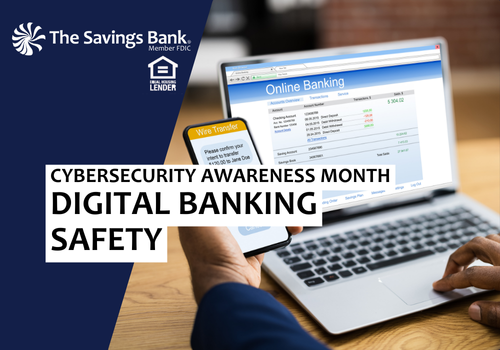Digital Banking Safety
10/30/2024

Digital Banking Safety
Many everyday consumers are often confused and even frustrated by the many security measures their digital banking websites and apps implement. Sometimes it can be hard to understand why these changes are necessary. However, updates to protocol are essential to protecting your money from bad actors.
First, let’s discuss some of the ways your online or mobile banking is protecting you. Many digital banking platforms are actively updating how they protect your money from criminals looking to steal it. Here are some ways:
Encryption Websites and apps often use encryption as a form of security. This just means that they disguise sensitive data like login info and bank statements. This keeps criminals from accessing the data.
Frequent Software Updates Every time your app updates, it is usually for one of two reasons. One reason is to fix glitches or improve useability to make the user experience more seamless and enjoyable. The other reason is to address vulnerabilities in security. This prevents data breaches that can leave your information in the hands of bad actors.
Extra Authentication Many digital banking platforms are now utilizing extra authentication methods to help secure your account, even in the event of a password breach. These methods may be biometric, like Touch ID or Face ID, or they may involve a two-factor authentication code or physical passkey. This ensures that only the person in physical possession of the extra authentication can access the account.
Frequent Password Updates Many digital banking platforms now require their users to frequently update their passwords. Most cybersecurity professionals agree that changing your password every six months drastically reduces your chances of a breach.
Next, let’s discuss some of the things you can do to further secure your digital online banking. In taking several easy steps, you can reduce the chances of a criminal gaining access to your data. Some of these steps include:
Create Strong Passwords Passwords are your best line of defense against someone trying to hack your account. By making them complex, you ensure that it is extremely difficult for someone to guess or generate your unique password. Some general rules are making passwords at least twelve characters; using a mixture of letters, numbers, and special characters; not using personal information or easily recognizable phrases; and using a unique password for every account. Furthermore, you should update your password frequently, and do not store passwords in easily accessible spots like your wallet or on your credit cards.
Do Not Bank Using Public Wi-Fi Public Wi-Fi is extremely vulnerable to hackers looking to steal data. That is why it is very important not to access your banking by using a device on an unsecured network while out in public. Instead, access your banking from your mobile device using data from your mobile provider. This will prevent hackers from being able to install malicious software on your device to steal login credentials.
Take Advantage of Updates and Security Alerts Many digital banking platforms allow their users to set up automatic software updates as well as customize security push alerts to their devices. Take advantage of these! Enabling automatic software updates will make sure your device always has the most up-to-date security. This means you can make sure you are alerted anytime there is a new spending alert over a certain amount, a new device login, or even suspicious activity. This can stop fraud as it happens.
While many digital banking platforms are actively taking measures to protect your accounts from fraud, there are also several things you can do to reduce your chances of a breach. If you suspect your account has been hacked or a breach has occurred, please contact your bank at a known number as soon as possible.
Sources:
https://www.usnews.com/banking/articles/how-to-keep-your-information-safe-when-online-banking
https://www.forbes.com/advisor/banking/how-to-protect-your-online-banking-information/
https://us.norton.com/blog/how-to/is-mobile-banking-safe
https://www.fdic.gov/consumer-resource-center/2023-10/scammers-and-fake-banks

